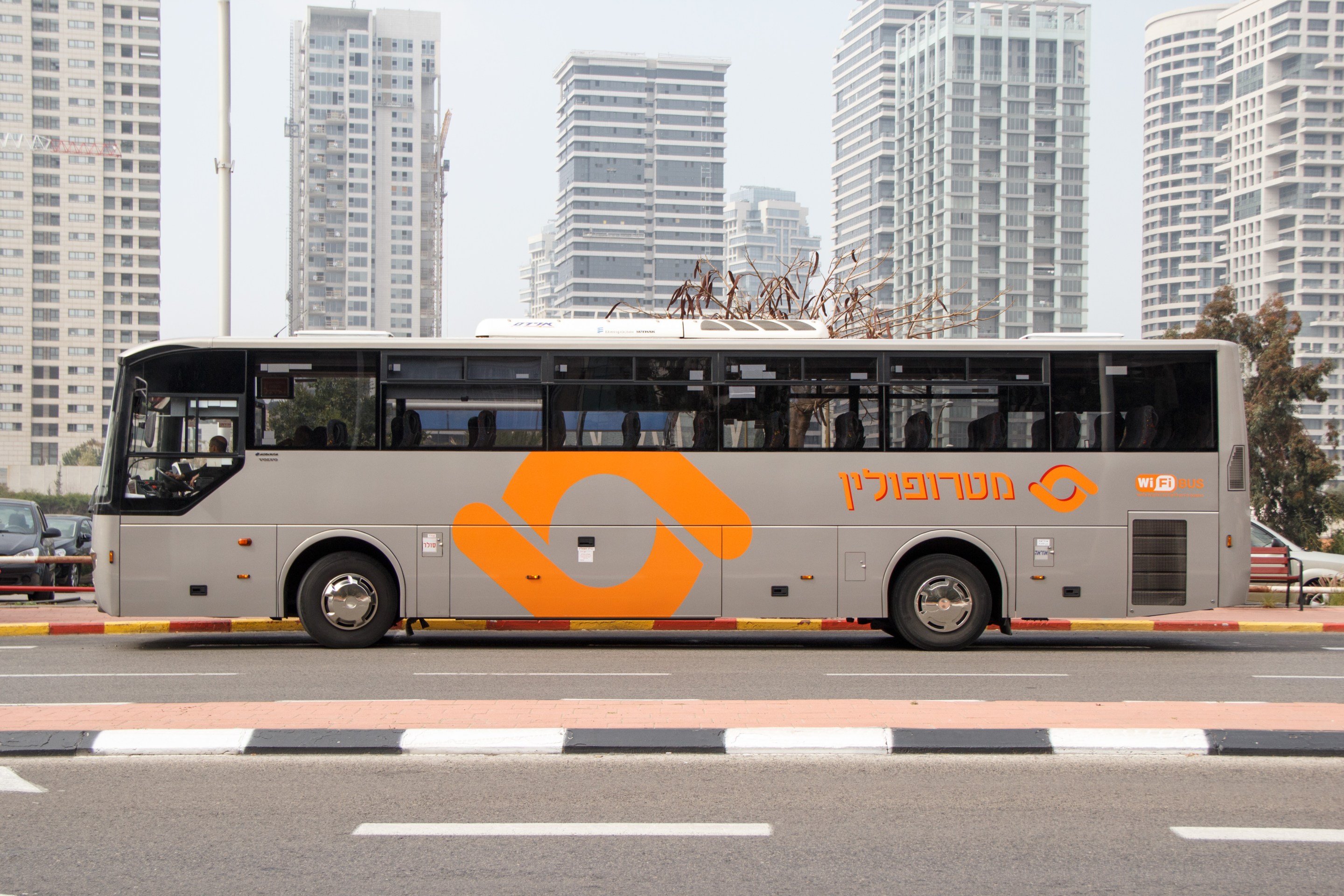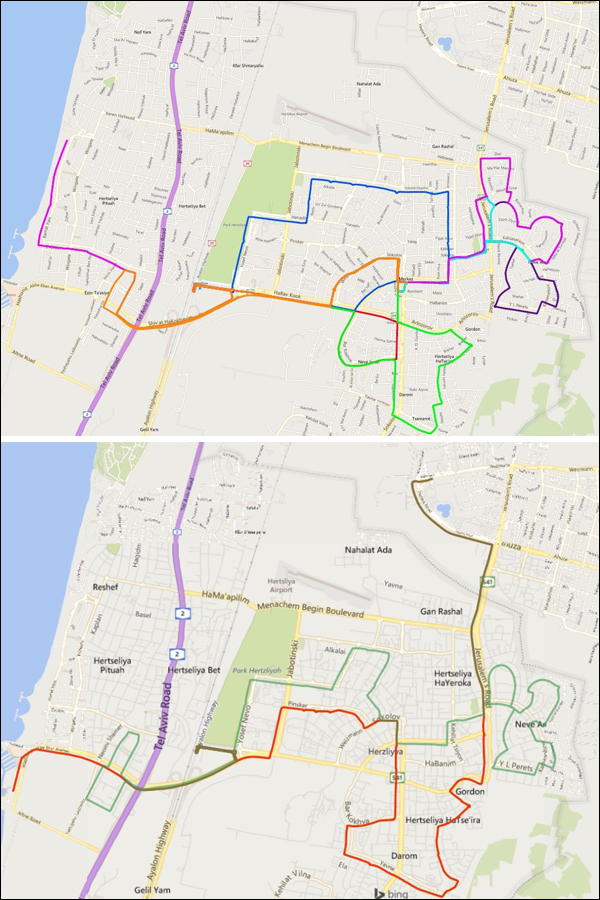When an affluent Israeli city just north of Tel Aviv upgraded its mass transit service in early 2018, municipal and transit officials hoped to boost ridership at least 10 percent.
Instead, ridership doubled in one year.
In the U.S., meanwhile, bus and train ridership declined last year in most cities, with steep plunges in big cities like New York, Chicago and LA.
So what can U.S. cities learn from Herzliya’s unexpected success at significantly increasing bus ridership?
Don’t confuse your riders
Prior to the overhaul, riders taking a given line to their destination had to take a different line heading back, since Herzliya’s bus lines were unidirectional.
They were also quite short, requiring multiple transfers to get across the city of 100,000. The old bus routes (top map, below) made it easy for riders to get confused.
Do get your riders where they need to go
This may sound like a no-brainer, but if your city changes, its public transit needs to change too.
In Herzliya, many things grew over time: population, malls, train service and a coastal high-tech zone. But bus service stagnated even as land use shifted.
The city’s nine short routes were replaced with two longer, bidirectional ones (bottom map, right), with each trip taking under an hour. Planners ensured buses reached the parts of the city residents most needed to access, overhauling the entire system in response to government incentives for more bus rapid transit lanes.
Don’t make it hard for riders to trust the buses
The need for frequent transfers was exacerbated by the waiting time imposed by infrequent service and restricted hours of operation. Some buses ran just once an hour, and some lines stopped operating as early as 7 or 8 p.m.
The old system made it hard for riders to trust that buses would get them to their destinations in time and would be available when they needed to travel.
Do run more buses, more often
Buses in Herzliya now run from 6 a.m. to 11 p.m. and are no more than 20 minutes apart.
The buses also make more trips, increasing from 1,000 average weekly trips (6,200 miles) to 1,600 (18,000 miles).
When you give the public a fixed route with a fixed frequency throughout the day, residents begin to trust the bus service and use it. Ridership grows.
Don’t sacrifice operational efficiency
Not only have hours of operation and bus frequency increased in Herzliya, but so has operational efficiency. Metropoline, the company that operates buses in the city, uses a cloud-based platform to create better shifts for drivers, optimize timetables and compare multiple schedule options. Bus service was revamped not over several months but in just four weeks, which “could not have happened with older scheduling platforms,” said Roei Fried, vice president of planning and transportation at Metropoline.
Increased operational efficiency can reduce costs, improve route planning and scheduling, and raise ridership rates.
Israel’s experience shows that if U.S. cities optimize route design, hours of operation, service frequency and operational efficiency – whether by cutting costs enough to invest in more bus trips, by using public funding (as in Herzliya), or through a combination of funding methods – they too could increase their ridership, and maybe even double it.
Amos Haggiag is the CEO and cofounder of Optibus, a Tel Aviv-based company that provides the technology to make mass transit operations more efficient in over 300 cities around the world.
Robert Ishaq is a researcher at the Technion-Israel Institute of Technology’s Transportation Research Institute.








